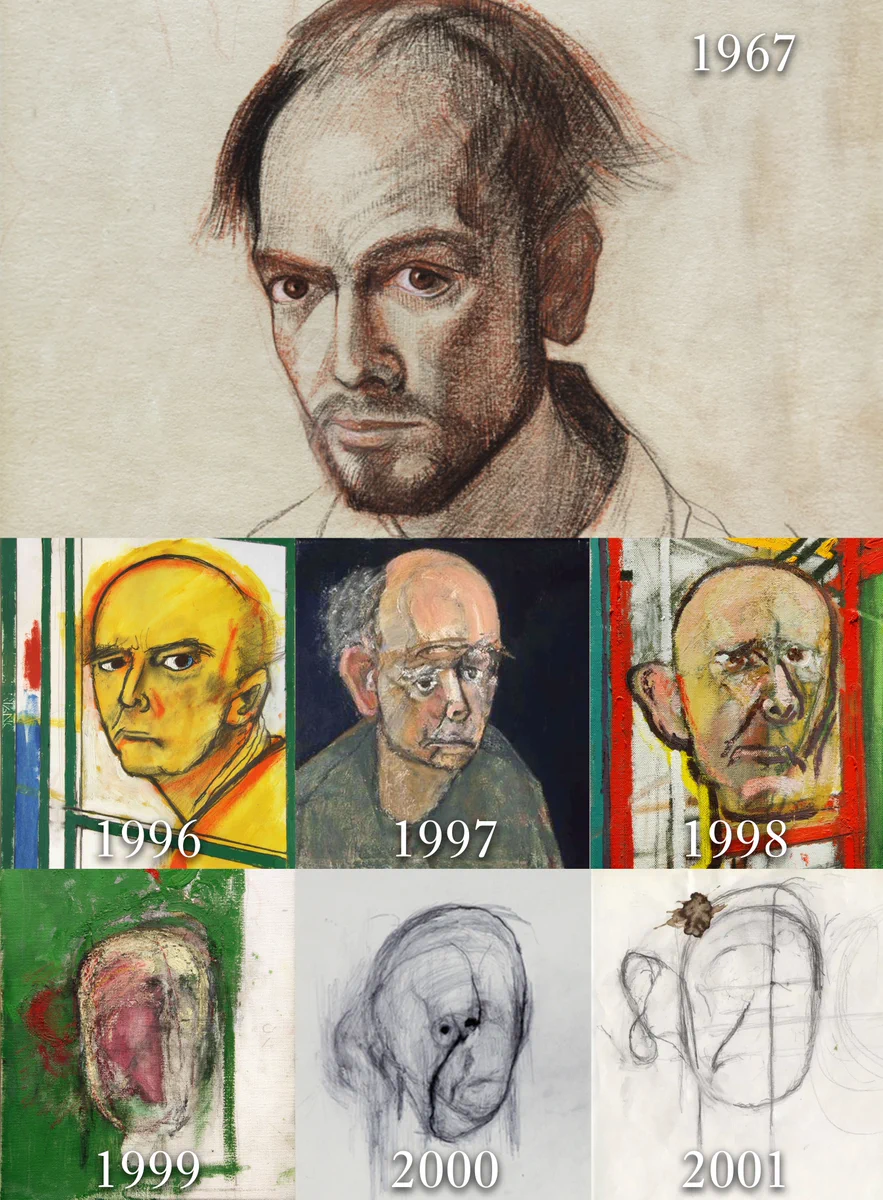DESIGNING FOR THE ABSENCE OF MEMORY

Poignant self-portraits by painter William Utermohlen, who was diagnosed with Alzheimer’s disease in 1995
See the dissemination posters:
2017. Proposal for a new architectural typology for patients with Alzheimer’s: preliminary study
Without memory, there is no poetry. We are memory. Memory is necessary so that the contemporary individual can define his identity and his own environment. Memory produces intense interference on Architecture, both personal and collective memory. The first generates as many landscapes as people. The second is the memory that each society has developed about its own culture as a repository of myths, traditions, and innovations to which it gives meaning and which is constantly changing. Memory establishes the symbolic relationship that unites the subject with the natural environment that surrounds him and that is transmitted to him in a social way.
When the powerful binder of memory is diluted, the architecture of memories collapses. The memory does not have an argument; it is not a narrative that can be evoked by a sequential or plot line; the memory presents what we have experienced as fragments of unconnected situations and images that are not ordered temporally. This characteristic of our mind and the relationship we establish with reality and time is transmitted to the project process; it intervenes in our work.
Memory and its relationships with heritage, landscape, architecture—in short, with people’s physical environments—is one of the group’s main areas of research, which it addresses from an architectural project perspective.
The contemporary paradigm of memory loss is Alzheimer’s disease, which is considered the epidemic of the 21st century, not only because of the number of cases diagnosed in geometric progression but also because younger people are increasingly being diagnosed. When Alzheimer’s enters a home, a series of changes are triggered in the daily lives of its inhabitants; their way of life inevitably changes. Given some behaviours of users with memory problems, it is worth asking if they are conditioned by their state or by their environment; if it is the latter,
how to project for the absence of memory?
See presentation of this line of research:
Designing for the absence of memory
See the article:
Designing tailored spaces for the absence of memory



